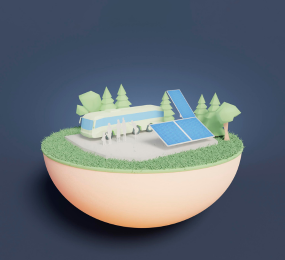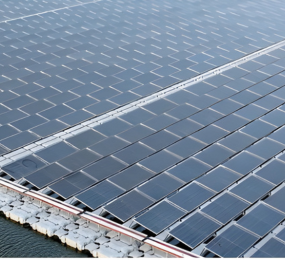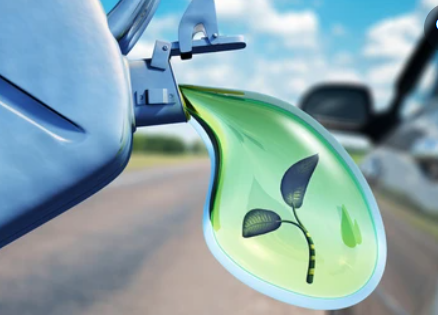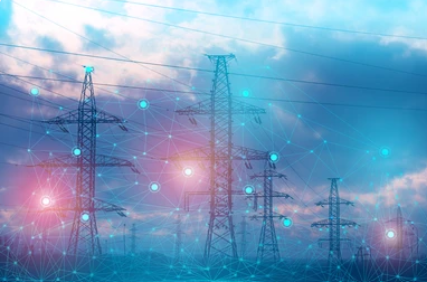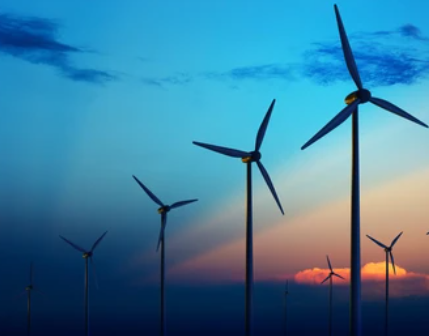As the global energy landscape continues to shift toward renewables, floating solar photovoltaics (FPV) have emerged as an innovative and efficient way to harness solar power. Instead of taking up valuable land, these systems float on water bodies like lakes and reservoirs, offering both energy and environmental benefits. But one important question often comes up in 2025: How do these systems affect lake ecosystems, especially water temperature and stratification?
Let’s explore the science behind floating solar photovoltaics and their impact on lake environments, broken down in a simple, easy-to-understand way.
What Are Floating Solar Photovoltaics?
Floating solar photovoltaics are solar panel systems mounted on floating platforms that rest on water surfaces. They generate electricity just like traditional solar panels but offer several unique advantages:
- Use of underutilized water surfaces (reservoirs, lakes, dams)
- Reduced land-use conflict
- Improved solar panel efficiency due to natural cooling from water
In 2025, more than 7 GW of global capacity has been installed using floating solar photovoltaics, with significant growth in Asia, Europe, and the U.S.
Why Water Temperature and Stratification Matter
Before diving into the effects, let’s quickly cover what we mean by lake water temperature and stratification:
- Water Temperature influences aquatic life, oxygen levels, and chemical processes.
- Stratification refers to how lakes separate into layers based on temperature—usually warmer at the top and cooler at the bottom during warmer months.
Changes in these conditions can affect fish habitats, nutrient cycling, and even algae blooms. So, any large structure like floating solar photovoltaics on a lake could potentially alter this natural balance.
How Floating Solar Photovoltaics Affect Water Temperature
When floating solar photovoltaics cover part of a lake, they block sunlight from reaching the surface directly beneath the panels. This shading can:
- Reduce surface temperature of the water under the panels
- Limit direct solar heating, especially during hot months
- Create cooler microzones, which may affect aquatic organisms living near the surface
In studies conducted up to 2025, lakes with over 40% surface coverage by floating solar photovoltaics showed up to 2–3°C lower surface temperatures in shaded areas compared to uncovered zones.
Impact on Lake Stratification
Floating solar photovoltaics also influence how heat is distributed vertically in a lake, which can change stratification patterns.
Key effects include:
- Delayed or weakened stratification: Less heat enters the water column, meaning temperature layering happens more slowly or not as strongly.
- More uniform temperature distribution: The difference between surface and deeper water temperatures may shrink, especially under continuous panel shading.
- Altered mixing dynamics: Wind-driven mixing is reduced due to the physical barrier of the panels, which could affect oxygen transfer and nutrient cycling.
In short, by limiting sunlight and wind interaction, floating solar photovoltaics can soften or shift the timing of lake stratification. Whether this is positive or negative depends on local ecosystem conditions.
What Do the Experts Say?
Scientific studies and pilot installations have found that floating solar photovoltaics have moderate but manageable impacts on lake stratification and temperature—particularly when coverage is kept below 50% of the surface area.
Key findings from 2025 research:
- 30–40% lake coverage generally does not cause major ecological disruptions
- Some species may benefit from cooler surface waters, while others may find habitat changes challenging
- Careful site selection and environmental monitoring are essential
Environmental Benefits of Floating Solar Systems
Interestingly, some of the effects of floating solar photovoltaics on lakes can be beneficial:
- Reduced algae growth due to lower sunlight penetration
- Lower evaporation rates, preserving water in drought-prone areas
- Improved water quality in some cases due to limited surface heating
These benefits make FPV systems attractive for water-scarce regions or areas struggling with excessive algal blooms.
FAQs: Floating Solar Photovoltaics and Lakes
Q1: Can floating solar systems harm fish and aquatic life?
Answer: When properly designed and monitored, floating solar photovoltaics have minimal negative effects on aquatic ecosystems. Fish may actually benefit from increased shade and habitat complexity.
Q2: Is there a limit to how much of a lake can be covered?
Answer: Yes. Experts recommend keeping coverage below 50% of the surface area to avoid significant changes to temperature and stratification patterns.
Q3: Do floating panels cause more or less evaporation?
Answer: Less. Floating solar photovoltaics reduce evaporation by blocking direct sunlight and lowering surface temperatures. Some studies in 2025 show up to 60% reduction in evaporation rates.
Q4: How are these systems anchored without damaging the lakebed?
Answer: FPV systems use non-invasive anchoring methods like mooring lines and floating pontoons, designed to adapt to water level changes without harming the lakebed or aquatic vegetation.
Final Thoughts
In 2025, floating solar photovoltaics are proving to be a smart and sustainable way to meet rising energy demands while preserving land and water resources. While they do influence lake water temperature and stratification, these impacts are generally manageable—and in some cases, even beneficial—when systems are designed thoughtfully.
As with any renewable technology, ongoing research, environmental monitoring, and responsible deployment are key to maximizing benefits while protecting natural ecosystems.
Floating solar photovoltaics are not just about clean energy—they’re part of a broader effort to balance innovation with ecological responsibility. The more we understand their effects, the better we can design a future that works for both people and the planet.


